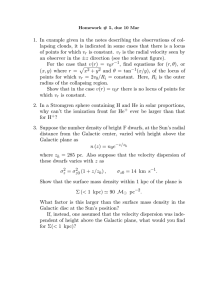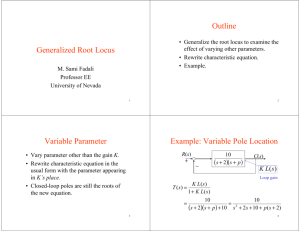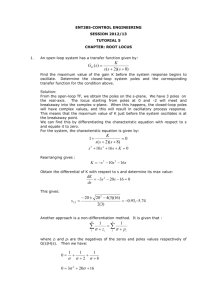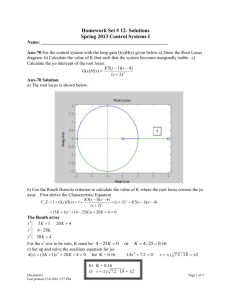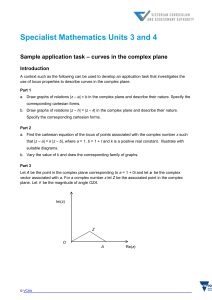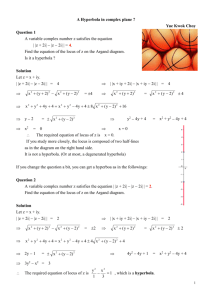Summary
advertisement
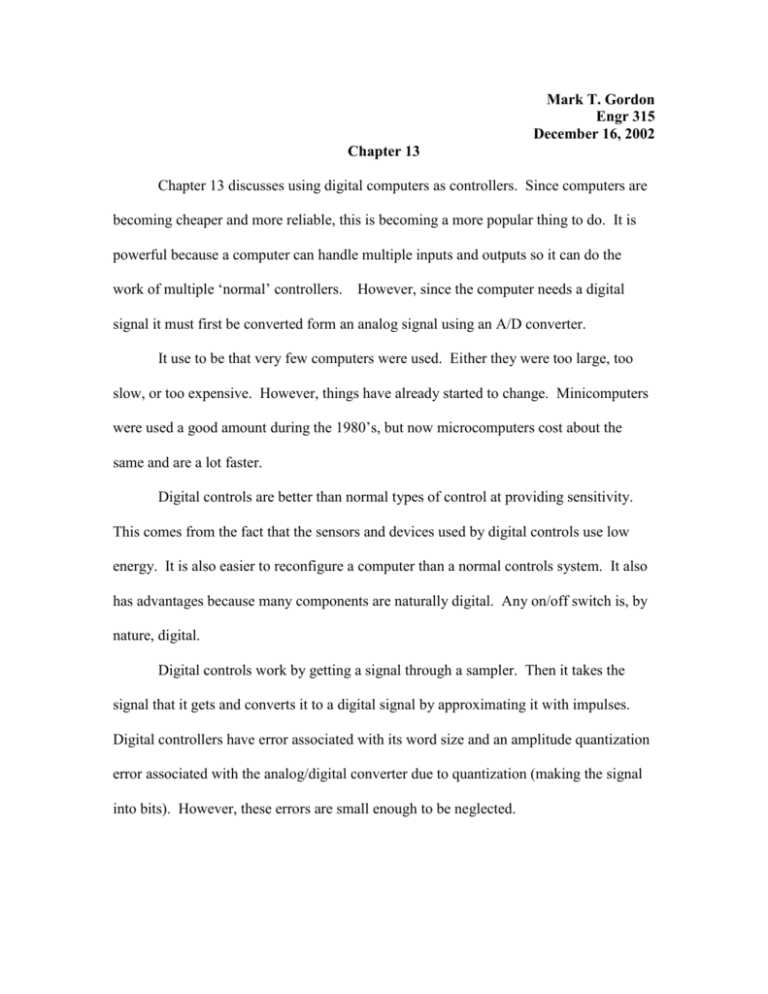
Mark T. Gordon Engr 315 December 16, 2002 Chapter 13 Chapter 13 discusses using digital computers as controllers. Since computers are becoming cheaper and more reliable, this is becoming a more popular thing to do. It is powerful because a computer can handle multiple inputs and outputs so it can do the work of multiple ‘normal’ controllers. However, since the computer needs a digital signal it must first be converted form an analog signal using an A/D converter. It use to be that very few computers were used. Either they were too large, too slow, or too expensive. However, things have already started to change. Minicomputers were used a good amount during the 1980’s, but now microcomputers cost about the same and are a lot faster. Digital controls are better than normal types of control at providing sensitivity. This comes from the fact that the sensors and devices used by digital controls use low energy. It is also easier to reconfigure a computer than a normal controls system. It also has advantages because many components are naturally digital. Any on/off switch is, by nature, digital. Digital controls work by getting a signal through a sampler. Then it takes the signal that it gets and converts it to a digital signal by approximating it with impulses. Digital controllers have error associated with its word size and an amplitude quantization error associated with the analog/digital converter due to quantization (making the signal into bits). However, these errors are small enough to be neglected. sT When the laplace is taken of these impulses, it provides a bunch of terms with e sT in them. To write this neater we define z e . This can be taken a step further and the z- k transform of a function f(t) can be written: Z( f ( t) ) F( z) f ( kT) z . These functions of z can be treated like the normal functions of s. The same T( z) block transformations can be done with them. The transfer function is still Y( z) R( z) . Stability analysis can be done in the z plane just as it was in the s plane. Just as the system was stable if in the s plane all of the poles were in the left portion, the system is stable when the poles lie within the unit circle of the z-plane. This is derived directly from the transfer from the s to z plane. Next a second order system was looked at. The characteristic equation can be obtained and used to see when the system will be stable. This leads to certain specifications on a system and finding the greatest gain possible while still having a stable system. The maximum overshoot can be calculated as well as the integral squared I error which is 0 2 e ( t) dt . The digital control system can also be used with a closed loop system. The U( z) transfer function of the computer is E( z) D( z) D( z) which is represented by C zA z B. determine the values of the digital controller you first write the compensator in the s plane. This is typically done with Gc( s ) K sa sb for a first order compensator. You should try to select a small sampling period so that the approximation is more accurate when converted over to the z plane. To Just like in the s plane, the z plane has a characteristic equation. Since the closed Y( z) loop transfer function is R( z) K G( z) D( z) 1 K G( z) D( z) the characteristic equation is the denominator, just as it was in the s plane, 1 K G(z) D(z) 0. Root locus can then be done using this. The book gives 5 steps to using root locus on the z-Plane: 1. The root locus starts at the poles and progresses to the zeros. 2. The root locus lies on a section of the real axis to the left of an odd number of poles and zeros. 3. The root locus is symmetrical with respect to the horizontal real axis. 4. The root locus may break away from the real axis and may reenter the real axis. The breakaway and entry points are determined from the equation K N( z) D( z) F( z) dF with z . Then obtain the solution of d 0 . 5. Plot the locus of roots that satisfy 1 K G(z) D(z) 0 or K G(z) D(z) angle( G( z) D( z) ) 180º k 360º 1 and for k = 0,1,2,… A z-domain transfer function for a PID controller is Gc( z) K2 T z ( z 1) K1 K3 z1 T z . Matlab can also be used to obtain the until step response of the system as well as the root locus of the system. Digital controllers are very important in the way controls are done today. With the advance of computer in the areas of their cost, speed, and size they are going to be even more important in the future. Since they behave, in many ways, like the controls we have already studied, the same types of analysis can be applied (with some alterations).

